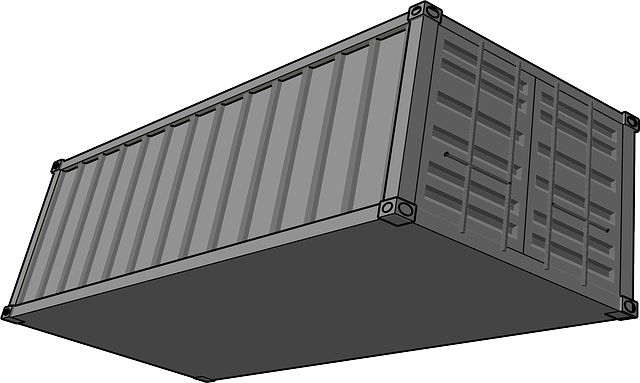Non-trucking liability is a critical concept that shields drivers from legal blame in accidents unrelated to their commercial trucking activities. It encompasses a wide range of driving scenarios, promoting responsible behavior and enhancing road safety. To mitigate risks, drivers should adopt proactive measures like regular vehicle maintenance, adhering to traffic rules, staying alert, avoiding distractions, and maintaining safe distances. Understanding non-trucking liability, local laws, load securing practices, and defensive driving techniques is crucial for minimizing accidents and ensuring safer journeys for all types of drivers. Comprehensive guides educate drivers on these best safety practices, ultimately prioritizing road safety for everyone's protection.
In today’s world, ensuring safety on the roads is paramount, extending beyond commercial trucking. While industry regulations focus on trucker safety, all drivers face risks from non-trucking liability—accidents not tied to professional hauling. This article explores proactive safety measures that safeguard every driver, regardless of their vehicle use. From understanding non-trucking liability’s reach to implementing effective risk mitigation strategies and adopting safe practices, these steps are crucial for navigating our bustling landscapes with enhanced security.
Understanding Non-Trucking Liability: Protections for All Drivers

For many, the term “non-trucking liability” might sound like a complex legal concept, but it’s an essential aspect of road safety that all drivers should understand. This refers to the legal protections and responsibilities associated with operating a vehicle for purposes other than commercial trucking. It covers a wide range of scenarios from everyday commuting to personal errands, ensuring that drivers are not held solely accountable for accidents due to factors beyond their control.
Understanding non-trucking liability is crucial as it provides a safety net for drivers, safeguarding them against potential legal repercussions when involved in collisions caused by third parties or unforeseen circumstances. This proactive approach to safety encourages responsible driving behavior, promoting a culture where all road users are mindful of their actions and the well-being of others on the roads.
The Importance of Proactive Safety Measures in Vehicle Use

In today’s world, where road safety is a paramount concern, proactive safety measures are not just ideal but essential for all vehicle users. The traditional approach of reacting to accidents and their aftermath falls short in mitigating risks effectively. Proactive safety involves anticipating potential hazards and implementing preventive strategies before any incident occurs. This is particularly crucial for non-trucking drivers who, despite not engaging in commercial trucking, still face various road risks. By adopting proactive safety practices, drivers can significantly reduce the likelihood of accidents, injuries, and associated liabilities.
Non-trucking liability for drivers extends beyond personal safety; it also encompasses financial responsibilities. Proactive measures such as regular vehicle maintenance, adhering to traffic rules, and staying vigilant while driving can prevent costly accidents and legal implications. Moreover, these measures foster a culture of road responsibility, encouraging all drivers to contribute to safer roads and communities.
Implementing Effective Risk Mitigation Strategies for Everyday Driving

In everyday driving, effective risk mitigation goes beyond adhering to basic traffic rules. Drivers should adopt a proactive approach by incorporating safety measures tailored to their specific needs and vehicle types. This involves regular maintenance checks to ensure brakes, tires, lights, and other critical components are in optimal condition. Additionally, staying alert during drives, avoiding distractions like mobile phones, and maintaining a safe following distance significantly reduce the risk of accidents.
For non-trucking liability, drivers must be particularly mindful of their actions. This includes adhering to local laws and regulations, understanding load securing practices for cargo transport, and recognizing potential hazards on different road types. By combining these strategies with continuous learning about defensive driving techniques, individuals can minimize risks and ensure safer journeys for themselves and others on the road.
Ensuring Safe Practices: A Comprehensive Guide for Every Driver

Every driver, regardless of their experience level or vehicle type, has a responsibility to uphold safety standards on the road. Mitigating risks through proactive safety measures is not just an option but a necessity. This involves adhering to fundamental safe driving practices such as maintaining a clear view, ensuring proper vehicle maintenance, and respecting speed limits. Staying focused, avoiding distractions like mobile phones, and regularly taking breaks during long drives are also crucial for preventing accidents.
Comprehensive guides and resources are readily available to educate drivers on non-trucking liability and best safety practices. These tools provide insights into potential hazards specific to different vehicle types and driving conditions. By arming themselves with such knowledge, drivers can anticipate risks and take preventive actions. Ultimately, prioritizing safety not only protects the driver but also ensures the well-being of fellow commuters, making roads safer for everyone.
In conclusion, mitigating risks through proactive safety measures is paramount for all vehicle users, regardless of their driving purpose. Understanding non-trucking liability and implementing effective risk mitigation strategies are essential steps towards ensuring safe practices for every driver. By adopting comprehensive guidelines and embracing a culture of safety, we can significantly reduce accidents and protect ourselves, our loved ones, and fellow road users. Let’s make proactive safety our shared responsibility to create safer roads for everyone.
